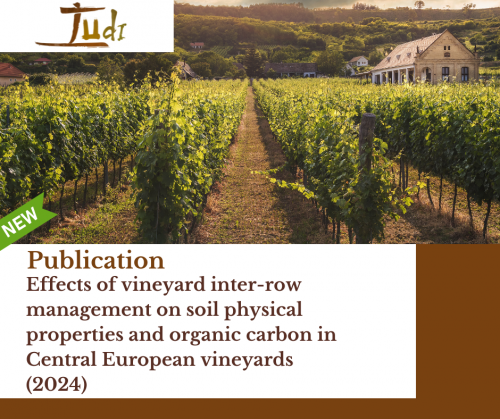TUdi Article: Effects of vineyard inter-row management on soil physical properties and organic carbon in Central European vineyards
The article “Effects of vineyard inter-row management on soil physical properties and organic carbon in Central European vineyards” was published in the “Soil Use and Management” journal in 2024, and is available in the TUdi library.
The practices used to manage the space between rows of grapevines vary in intensity and frequency depending on the local environment and the attitude and experience of the wine grower. Reasons for the variety in management can be traced back to water conservation, weed and pest control, biological activity promotion and soil fertility and biodiversity preservation.
The article presents the study of different soil cover management practices in 16 paired vineyards located at eight sites in eastern Austria's Leithaberg and Carnuntum regions. The study drew a comparison between inter-rows with medium-intensity (Periodically Mechanically Disturbed) and low-intensity (Permanent Green Cover). The effects of these management intensities on soil organic carbon, bulk density, saturated and unsaturated hydraulic conductivity, pore size distribution and percolation stability in the upper soil layer from 3 to 8 cm were investigated.
It was discovered that in a vineyard with a permanent green cover (such as grass or cover crops) between the grapevine rows soil organic carbon and percolation stability were significantly higher, whilst soil bulk density was significantly lower. On the other hand, no significant differences were observed in saturated hydraulic conductivity, pore size distribution, and plant available water. A potential reason that was highlighted was the time lag effect, which suggests that the observed effect on the vineyard soil properties may not be fully noticeable immediately, as the effect of the last tillage may take up to 2 years to manifest clearly.
A regression analysis was conducted to estimate the amount of plant-available water in the soil of local vineyards, finding that texture, organic carbon and bulk density are good predictors.
These results indicate that both inter-row management systems examined support a good soil structure for winegrowers. Whilst permanent vegetation cover systems can enhance soil organic carbon content and related parameters, the benefits of improving the amount of water that plants can use are limited.
